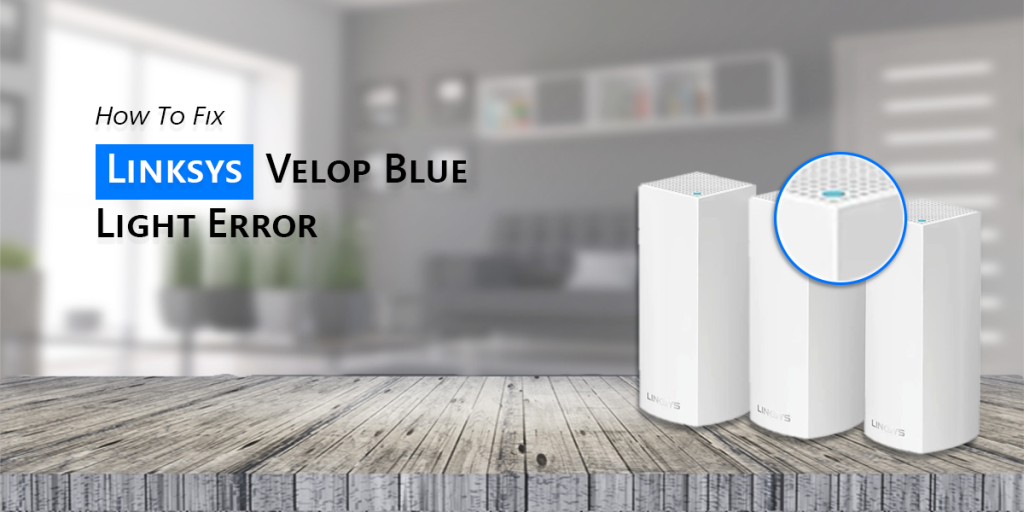
You already know that the Linksys Velop mesh WiFi system provides dependable, seamless internet coverage across your house or place of business if you utilize it. Like any technology, it occasionally emits cryptic light signals that need to be decoded and then used. The Linksys Velop blue light is one example of such an indication. Maintaining a reliable network requires knowing what it signifies, whether it blinks blue, turns solid blue, or abruptly goes dark.
We’ll cover all you need to know about the Linksys Velop blue light in this blog, including what causes the blue light to blink, how it varies from the solid blue light, and how to troubleshoot these problems step-by-step.
Gaining Knowledge About Linksys Velop Light Indicators
- Blue light that blinks often means the node is turning on or attempting to connect to the internet or the main node.
- linksys velop solid blue light: The node is operating flawlessly if it has a solid blue light. The node has a good connection, and the network is operational.
There may be a more serious problem that requires attention if your linksys velop blinking blue light never turns solid or if you have sluggish or lost connections.
Typical Reasons For Linksys Velop Blue Light Issues
Incorrect Node Positioning
- Your nodes may have trouble connecting and may blink endlessly if they are too far apart or from your modem.
Outage of the Internet
- The Linksys Velop’s blue light blinking may occasionally be the result of a broad ISP problem.
Updates to the firmware are ongoing
- It’s possible that your Velop system is upgrading. If this procedure is interrupted, problems may arise later.
Incorrect Configuration or Login Issue
- Nodes may become trapped in a blinking state if the Linksys velop login session fails during setup.
Hardware Error
- A malfunctioning node may not be able to keep a connection or sync.
Configuration issues Inconsistencies in node behavior may result from incorrectly stored configurations or settings mistakes.
How To Solve The Linksys Velop Blue Light Error Step-by-Step
1. Authenticate Internet Connection
Validate that your internet is operational appropriately before beginning device-specific velop linksys troubleshooting. Use Ethernet to connect a laptop straight to the modem. Your ISP is the problem if there is no internet.
2. Turn Off and On Your Devices
The Linksys Velop’s blinking blue light may occasionally be fixed with a quick reboot.
Actions to take:
- Unplug every Velop node and the modem.
- Hold off for 30 seconds.
- Wait for the modem to fully start up after plugging it in.
- Connect the main Velop node now.
- One by one, turn on the remaining nodes after it’s steady.
3. Verify Node Positioning
- Make sure your nodes are close to one another and unobstructed by metal, thick walls, or electrical interference.
- Consider relocating a node nearer to the main node.
- Check to see whether the flickering blue becomes solid blue after a few minutes.
4. Diagnose with the Linksys App
- An effective tool for Linksys troubleshooting is the Linksys app.
- Launch the application and enter your Linksys login information to log in.
- Check each node’s status.
- Try to reconnect or reset any nodes that display “disconnected” or “linksys velop offline.”
5. Look for updates to the firmware
- Errors and poor performance might result from outdated firmware.
- Open the Linksys online interface or app and log in.
- Navigate to Settings > Update Firmware.
- Apply the update and restart the computer if it is available.
6. Reset the Node in Question
Do a reset if the node doesn’t stable and keeps flashing blue:
- For approximately ten seconds, hold down the reset button located at the node’s bottom until the LED turns red.
- Await the reboot of the node.
- Use the Linksys app to re-configure it.
7. Verify whether Linksys Velop is not available
Your network may appear to be operational at times, but Linksys Velop is actually unavailable because of incomplete configuration or issues with your ISP.
Utilize the online interface or app to:
- Verify the node’s status
- Make sure “Connected” is selected for the internet.
- If required, adjust the network settings.
Extra Advice on Long-Term Stability
- Use the most recent Linksys app version at all times.
- Set up regular firmware upgrades.
- Nodes should not be positioned next to thick concrete, baby monitors, or microwaves.
- To prevent sync problems, only rename your network’s SSID from the main node.
- Every week, check the network health using the app.
Final Thoughts
If you understand what the Linksys Velop blue light is attempting to tell you, it might be a useful signal. Your Velop system is interacting with you, whether it’s flashing during setup or displaying a bright, blue light after configuration. You may reliably troubleshoot and fix the majority of blue light indication difficulties, from setup glitches to connectivity issues, by following the above instructions.
Maintaining your system’s updates, positioning, and regular checks using the Linksys app will significantly improve network dependability.